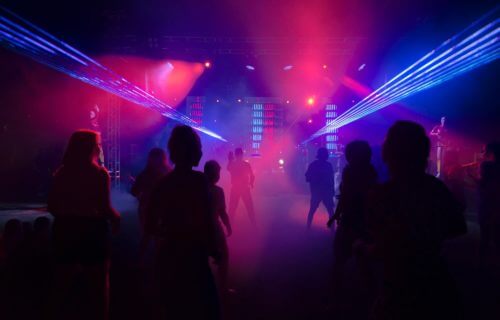HAMILTON, Ontario — It really is all about that bass when it comes to filling the dance floor, according to a new study of sound waves. Researchers from McMaster University found that people danced almost 12 percent more when a very low frequency bass was playing.
The team put on a concert at the McMaster LIVELab to find out how bass affects movement. The electronic duo Orphx performed a 45-minute gig at the venue, which was equipped with 3D motion capture, a Meyer sound system that can replicate various concert environments, and enhanced speakers that can produce extremely low frequencies.
These frequencies are so low that they are undetectable to the human ear.
“The musicians were enthusiastic to participate because of their interest in this idea that bass can change how the music is experienced in a way that impacts movement,” says Dr. Daniel Cameron, a neuroscientist from McMaster University, in a media release. “The study had high ecological validity, as this was a real musical and dance experience for people at a real live show.”
The participants who attended the concert wore motion-sensing headbands to monitor their dance moves. Each person also filled out a survey before and after the event to ensure the sound was undetectable, measure concert enjoyment, and find out how the music felt physically.
Throughout the concert, the researchers manipulated the very-low bass-playing speakers, turning them on and off every two minutes. They found the amount of movement was 11.8 percent greater when the speakers were on, showing that it is in fact — all about that bass.
People literally feel the rhythm of the music
With low bass comes strong vibrations that can be felt throughout the body. These vibrations can be sensed through touching the floor or speakers themselves, as well as through our ears. The interaction between the vibrations and our body affects our body’s motor system, which is what researchers think gives people the urge to dance.
“Very low frequencies may also affect vestibular sensitivity, adding to people’s experience of movement. Nailing down the brain mechanisms involved will require looking the effects of low frequencies on the vestibular, tactile, and auditory pathways,” says Cameron.
“I’m trained as a drummer, and most of my research career has been focused on the rhythmic aspects of music and how they make us move,” the study’s first author concludes.
“Music is a biological curiosity–it doesn’t reproduce us, it doesn’t feed us, and it doesn’t shelter us, so why do humans like it and why do they like to move to it?”
The study is published in the journal Current Biology.
South West News Service writer Alice Clifford contributed to this report.

